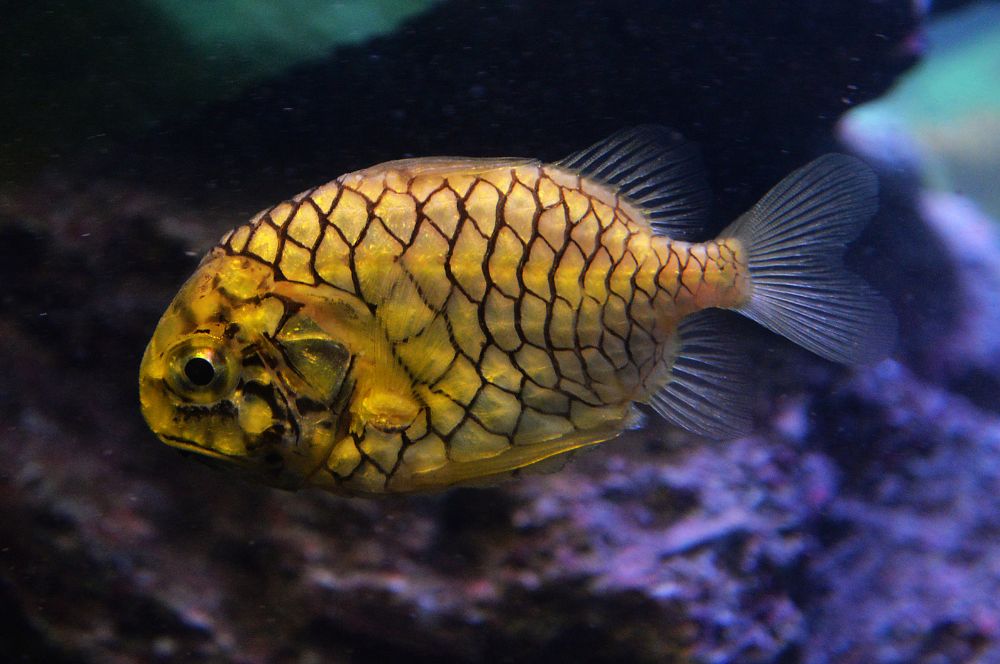What is Bioluminescence?
Peter Letts Mar 02, 2025
What is Bioluminescence?
Have you ever seen the ocean at night and been mesmerized by the flashes of light? This is called bioluminescence, and it’s a really cool phenomenon! In this blog post, we will discuss what bioluminescence is, how it works, and some of the animals that use it. Stay tuned for some amazing photos and videos of bioluminescent creatures!
So, what is bioluminescence? Bioluminescence involves a chemical reaction that produces light, specifically a type of chemiluminescence. The light produced in this reaction includes the chemicals luciferin and luciferase. Some animals make these chemicals themselves, while others absorb them from their food. There are also some animals that allow bioluminescent organisms to live inside them, forming a symbiotic relationship. Most bioluminescent animals live in the ocean, but there are also some that live on land. Animals use bioluminescence for survival, attracting food, and reproductive purposes. Additionally, bioluminescent algae have potential uses as a sustainable, eco-friendly light source and for studying digital communication.

Bioluminescent Organisms
One of the most well-known bioluminescent animals is the firefly. Fireflies produce light in their abdomens, and they use this light to attract mates. When two fireflies of the same species meet, they flash their lights in a special pattern. If the patterns match, then they know that they are suitable mates. Bioluminescent organisms produce light through a chemical reaction involving luciferin and luciferase.
Another well-known bioluminescent animal is the glow worm. Glow worms are actually not worms at all but the larvae of a type of fly. These larvae produce light in order to attract prey. When an insect flies into the light, the glow worm grabs it with its mouthparts and eats it. Bioluminescent bacteria have a symbiotic relationship with marine animals such as squid, where they are an integral component of the animal’s light organ.
Deep sea squid, such as Octopoteuthis deletron, use bioluminescence for various purposes, including detaching their bioluminescent arms to distract predators. When in danger, the squid may detach its bioluminescent arms, which stick to and probably distract their predators, allowing the squid to escape. Other bioluminescent organisms use their light for startling, counter-illumination, smoke screens, misdirection, and as a burglar alarm.
Bioluminescence is found in a wide range of marine species, including fish, bacteria, and jellies. Specific examples of bioluminescent marine animals include squid, midshipman fish, and dinoflagellates.
Bioluminescence and deep sea night diving magic
Night diving and bioluminescence often go hand in hand. When you switch your dive torch off at night, tiny plankton specs light up in the darkness, giving the underwater an ethereal look. This is due to bioluminescent algae, which are single-celled marine organisms that produce a bluish-green light. The blue-green light is significant for underwater visibility and communication among deep-sea animals. The most common type of bioluminescent organisms are dinoflagellates, of which Noctiluca scintillans (otherwise known as sea sparkle) is one. So next time you’re night diving, don’t forget to look out for these amazing creatures!
Bioluminescent algae can also be forced to glow under certain conditions, and they have potential uses in architecture and human-computer interaction design. Researchers can force bioluminescent algae to glow by disturbing them, which triggers a chemical reaction involving luciferin and luciferase.
Ship Rock on a full moon is one of the best night diving locations to see bioluminescence in action. The sea pens here respond to being touched by glowing blue light in the dark through a process called bioluminescence. This occurs when a chemical reaction takes place within the sea pen, and energy is released in the form of light emitted. These showy displays resemble the lights on a movie marquee as the flashes circulate up and down the rod-like stem of the sea pen and are used to startle potential predators.

Pineapple fish, also found at Ship Rock, are also known as the “port-and-starboard” light fish, as they have a pair of bioluminescent organs that are reminiscent of navigation lights on ship. These organs are actually light-producing bacteria that live symbiotically inside the fish. When the fish opens its mouth, the light from the bacteria is emitted, providing camouflage from predators and attracting prey.
Pineapple fish, also found at Ship Rock, are also known as the “port-and-starboard” light fish, as they have a pair of bioluminescent organs that are reminiscent of navigation lights on ship. These organs are actually light-producing bacteria that live symbiotically inside the fish. When the fish opens its mouth, the light from the bacteria is emitted, providing camouflage from predators and attracting prey.

One example of marine animals that produce light is the anglerfish. The anglerfish has a long filament that protrudes from its head, and at the end of this filament is a light-producing organ. The anglerfish uses light to attract prey, and when an unsuspecting victim comes close, the anglerfish quickly grabs it with its mouth. Certain deep-sea fish like dragonfishes use red light to see red-pigmented prey and communicate with mates, as it is invisible to most other fish that can only see blue light.
Another ocean creature that uses bioluminescence is the squid. Deep sea squids use light for many different purposes, such as attracting mates, luring prey, and startling predators. They can also change the colour of their light to communicate with other squids. The visible light spectrum is crucial in understanding the different bioluminescence colours seen in marine organisms and their adaptations.
There are many other animals that use bioluminescence, and we have only just scratched the surface!


